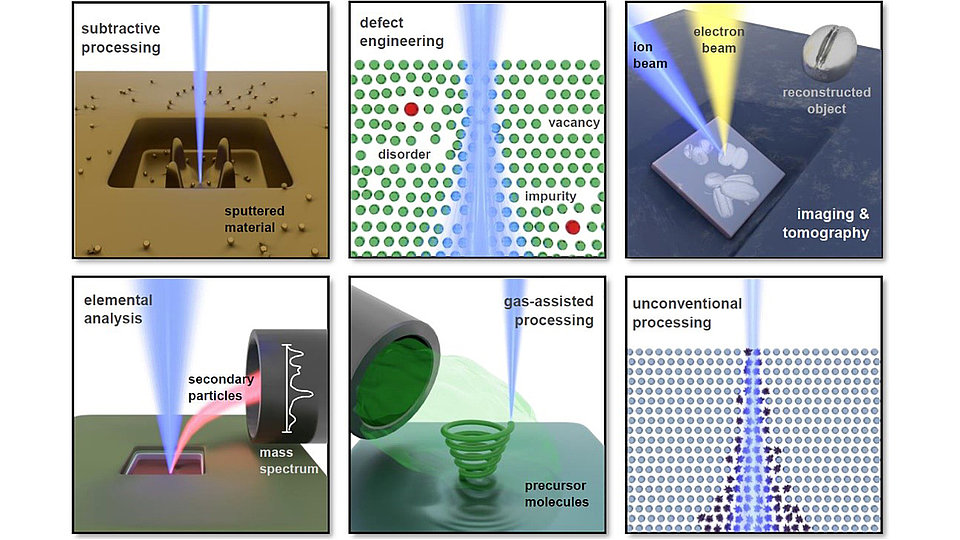Roadmap for focused ion beam technologies
FIB instruments employ a finely focused beam of ions with an energy of typically 2-30 keV that is scanned across a sample to effect modifications down to the nanometer scale. The technique relies on the transfer of energy from the energetic primary ion to target atoms, resulting in the displacement of the substrate atoms and potentially their removal from the sample. As such, the FIB instrument is a universal tool for all areas of research enabling comprehensive analyses, maskless local material changes and rapid prototyping of devices.
The goal of this roadmap is to outline the current state of FIB technology and its future prospects for relevant stakeholders such as researchers, manufacturers and funding agencies. This document provides a comprehensive picture by bringing together the various efforts in this field. It is intended to serve as a reference for people from all research fields who could potentially benefit from FIB technology or already use it in their daily work. By looking at FIB developments through the lens of the different research communities, we aim to identify future avenues for ion source and instrument development, emerging applications and opportunities for better understanding the complex interplay of ion-solid interactions. The purpose is to provide a guide for scientists in all fields to identify common research interests and support future fruitful interactions between instrument development, experiment and theory.
The manuscript is organized as follows: Following the introduction in Section I, Section II gives an overview of FIB instrumentation, starting with the generation and control of the focused ion beam, leading on to detectors and other complementary tools and accessories. Section III summarizes the theoretical approaches that can be used to describe various aspects of ion-matter interactions, including the binary collision approximation, molecular dynamics, kinetic Monte Carlo techniques, density functional theory, and continuum modeling. The wide range of applications of the FIB is discussed in Section IV, which is organized according to the various experimental techniques (subtractive processing, defect engineering, imaging and tomography, elemental analysis, gas-assisted processing, and several other emerging directions). For each field of application, a selection of examples is discussed. As a service to the community summary tables with citations have been compiled in order to provide a more comprehensive (albeit non-exhaustive) literature review of each application field. These tables can be used as a starting point to help the reader identify new opportunities using the FIB for their own research.
Central to this document is the roadmap in Section V, which highlights future perspectives for FIB research and development based on the state of the art in instrumentation, theory and applications described previously. Here we have identified the key drivers for FIB in different areas of science and technology and linked these to FIB-specific challenges and the steps required for future developments.
As the applications of FIB processing are extremely diverse, it will not be a single technological development that brings a breakthrough. Instead, numerous advances will be needed in order to address the challenges that have been identified. Therefore, we look forward to an exciting future where FIB processing will grow in importance and open new avenues in many areas of science and technology, spanning from quantum technology to the life sciences.
The roadmap for focused ion beams has been published in Applied Physics Reviews as Featured Article. The group of main authors was assembled under the European COST Action CA19140 FIT4NANO (www.fit4nano.eu), with the first author and lead of the application working group being from FBH. The manuscript is available at: https://doi.org/10.1063/5.0162597.
